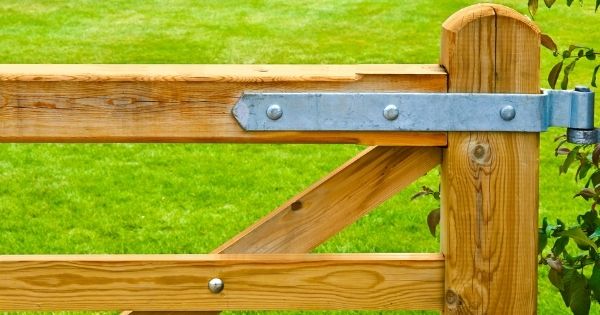Tips for Choosing the Right Gate Hinge for Your Application

Installing a new door or gate requires the use of a gate hinge. This is the anchor point of the door that allows it to swing back and forth and close. With various kinds on the market, it can be tricky to figure out what hinge provides the best application.
Consider our tips for choosing the right gate hinge next time you upgrade an existing hinge or install a completely new door or gate.
Types of Hinges
When deciding which hinge to go with, keep in mind the materials, the location of the hinge, and the load-bearing capacities. Generally, the manufacturer will attach the most appropriate snippet to each hinge. Here is a list of common hinges you may find while browsing the hardware store.
- Butt Hinge
- For a lightweight door
- Holds 200 lb.
- Heavy Duty Weld-On Hinge
- For a heavy-duty industrial door
- Holds 1,000–4,000 lb.
- Strap Hinge
- Long triangular flaps for garage or barn doors
- Holds 40–120 lb.
- Overlay Hinge
- For kitchen cabinets to lie flush when open
- Holds minimal weight (10 lb.)
- T-Hinge
- Combines a traditional hinge and a strap hinge for lightweight doors
- Holds 50–75 lb.
Keep Height, Width, and Weight as the Main Factor
The main and most important factors when deciding on a gate hinge are the height, width, and weight of the door or gate. While a chain-link fence is lightweight, a solid iron fence is very heavy and calls for different hinges. You never want to underestimate the hinge, or your door may sag, not swing, or be hard to open.
Keep in Mind the Type of Lot Space
Another tip for choosing the right gate hinge is to keep in mind the type of lot you’re on. An industrial setting might call for heavy-duty stainless steel weldable hinges, and a residential lot might only need a butt hinge. Recognize the amount of traffic going through the door, as this will also determine if you need a heavy-duty or lightweight hinge.
Consider Weather Conditions
If you plan on applying the gate hinge to a component outside, you’ll need a specific weatherproof hinge. Stainless steel is a metal that holds up well against environmental forces. An outdoor gate hinge relies heavily on the mechanism’s durability and anti-rust properties.
Think Aesthetics Last
Lastly, you can choose some hinges based on their aesthetics. A strap hinge or T-hinge is the best option for adding another element of flair to the gate or door. Other factors to consider include if you want the gate to open/close in only one direction or more, quality, shape, material, and dimensions.
Ultimately, you’ll want to choose a hinge that serves the most functionality. After installing the hinge, you want your door to function correctly and smoothly, which is the main attribute you need to look for. Follow these tips for a fast and easy decision next time you make a stop at the hardware store.

